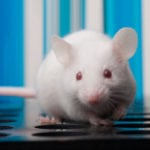 Mysteries
Mysteries  Mysteries
Mysteries  History
History 10 Surprising Stories About the Texas Rangers
 Humans
Humans 10 Philosophers Who Were Driven Mad by Their Own Theories
 Miscellaneous
Miscellaneous 10 Video-Game-Worthy Weapons and Armors from History
 Weird Stuff
Weird Stuff 10 Psychics Who Accurately Predicted Wartime Events
 The Arts
The Arts 10 Pieces of Art Inspired by a Broken Heart
 Health
Health 10 Science Fiction-Sounding New Medical Treatments
 History
History 10 Surprising Facts About the Father of Submarine Warfare
 Space
Space Ten Astonishing New Insights into Alien Worlds
 Weird Stuff
Weird Stuff 10 Bizarre Summer Solstice Rituals Still Practiced Today
 Mysteries
Mysteries Top 10 Haunting Facts About the Ghost Ship MV Alta
 History
History 10 Surprising Stories About the Texas Rangers
 Humans
Humans 10 Philosophers Who Were Driven Mad by Their Own Theories
Who's Behind Listverse?

Jamie Frater
Head Editor
Jamie founded Listverse due to an insatiable desire to share fascinating, obscure, and bizarre facts. He has been a guest speaker on numerous national radio and television stations and is a five time published author.
More About Us Miscellaneous
Miscellaneous 10 Video-Game-Worthy Weapons and Armors from History
 Weird Stuff
Weird Stuff 10 Psychics Who Accurately Predicted Wartime Events
 The Arts
The Arts 10 Pieces of Art Inspired by a Broken Heart
 Health
Health 10 Science Fiction-Sounding New Medical Treatments
 History
History 10 Surprising Facts About the Father of Submarine Warfare
 Space
Space Ten Astonishing New Insights into Alien Worlds
 Weird Stuff
Weird Stuff 10 Bizarre Summer Solstice Rituals Still Practiced Today
10 Weird Experiments Using Animal Sperm
Sperm are weird-looking, and scientists have done weird things with them. Some of their accomplishments would seem to be biologically impossible. Here are 10 such experiments.
10 Chickens That Ejaculate Pheasant Sperm
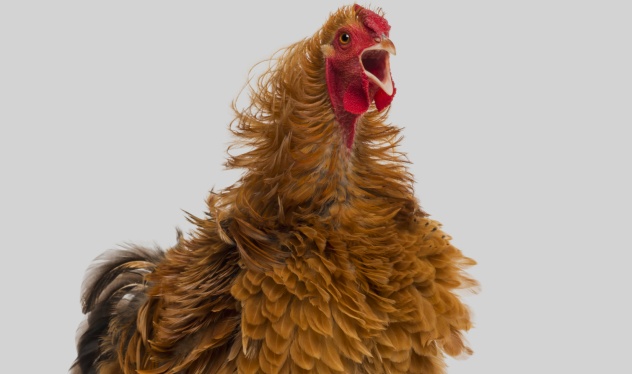
A male can never be sure that he is the father of his children. (Even DNA tests sometimes fail.) There is one thing, though, that he has always felt that he could count on. Surely his own sperm, ejaculated from his own penis, must be genetically his, right? Science, however, has taken away even that small comfort. In the lab, it’s now possible to create what’s called a “germ-line chimera.” Such an animal has two kinds of cells, each with its own DNA. The first kind of cell forms most of the animal’s body. The other kind of cell, located in the testicles, forms the sperm.
This is pretty easy to do in birds. First, take sperm-forming cells from one embryo. Then, inject them into the bloodstream of a second embryo. As the second embryo grows, the donated cells will find their way into the developing testicles. Later, when the bird is mature, it will ejaculate sperm from that first embryo.
This approach enables all kinds of weird experiments. In one, scientists transplanted pheasant cells into chicken testicles. When these chickens had sex with female pheasants, some of their offspring were completely normal pheasants. In other words, they were genetically unrelated to the chicken who had ejaculated the sperm. Scientists have also transplanted chicken sperm into ducks via the same method. Once they transplant duck sperm into pheasants, everything will have come full circle, or perhaps full triangle.
9 Collecting Semen From Dead Kangaroos

In nature, male animals usually ejaculate into female animals. In the lab, they can sometimes be convinced to do it in other places. One persuasive technique is called electroejaculation. In it, an electrical current is applied through the animal’s rectum. The shock causes the animal to release semen. In 1965, scientists tried it on wild kangaroos. First, they shot the animals. After that, there were four steps: Lay the dead animal on its side, extend its penis by hand, insert a probe into its anus, 23 centimeters (9 in) deep, and . . . zap.
With most species, you don’t need to kill the animal first. In 1975, scientists tried it on living kangaroos. This went very badly. First, the sessions were traumatic for the animals. Second, they got barely any semen. If the scientists anesthetized the kangaroos, the results were better. Still, it didn’t work as well as simply killing them. Weirdly enough, dead kangaroos give the most semen.
Another disappointing factor was that under every condition, the semen itself wasn’t very good. It didn’t contain many sperm cells, just seminal plasma, which is the sticky fluid that surrounds sperm. By studying the plasma, though, the scientists did verify an interesting fact: The sugar profile of kangaroo semen is different than that of more distantly related mammals. To put that another way, kangaroo semen probably tastes different than human semen, though no one (we can only hope) has ever verified that directly.
There was a happy ending to all of this kangaroo zapping. In 1997, scientists finally managed to get good amounts of sperm cells by electroejaculating kangaroos that had only been anesthetized. It was a win-win—lots of kangaroo sperm and no dead kangaroos.
8 Goat Sperm In A Hamster Egg (Via Pig Uterus)
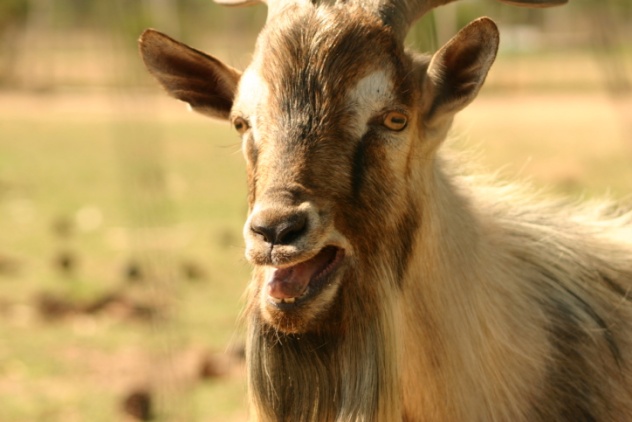
Goat-hamster hybrids are tough to make. Even the first step is a struggle. If you mix together goat sperm and hamster eggs, not much happens. Even stripping off the egg’s outer layer doesn’t really help. The goat sperm still has a hard time getting in. In 1980, though, scientists found a solution. What really helps, as it turns out, is to first incubate the goat sperm inside of a pig uterus.
There is a procedure for this: First, help the goat to ejaculate into an artificial vagina. Collect its semen. Then, find a dead pig and cut out a piece of its uterus. Put the sperm inside the uterine tissue and seal both ends. Immerse the whole thing in a saline solution for a few hours and then flush the sperm back out. After that, the goat sperm will be primed, ready to fertilize hamster eggs and make goat-hamster embryos.
There’s not much else to say. Once conceived, the little hybrid embryos aren’t going to make it very far. (Even goat-sheep hybrids, whose parents are much more closely related, often don’t do well.) But that’s another problem for another experiment.
7 Worm Sperm Without DNA
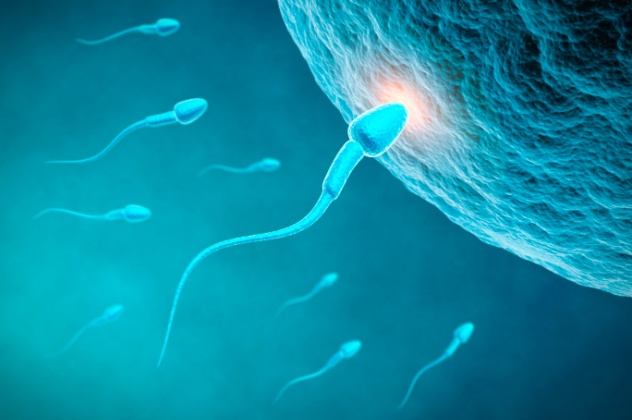
Sperm exist to transport DNA. They start in the testicles, and if they’re lucky, they deliver the male’s DNA to the female’s eggs. That’s it. It’s weird to even think about sperm without DNA, as such a thing would seem pointless. Scientists, however, have created just that, using Caenorhabditis elegans, a roundworm. In 2000, they found two mutants that could be tricked into making DNA-less sperm, just by raising the temperature.
Surprisingly, the lack of DNA barely mattered, at least at the beginning. DNA-less sperm did all of the normal things that nonmutant C. elegans sperm do. They crawled into a sperm-storage organ called the spermatheca. They sought out eggs and fertilized them. Inside each egg, a little embryo started to grow. The one thing that DNA-less sperm can’t do is, of course, provide DNA. Eventually, that became critical. With only half a genome, the embryo stopped growing while still a ball of cells.
6 Transplanting Ocelot Sperm Into A Common Cat

The common cat is great at making babies. They’re so great at it that populations are out of control and we’re sterilizing them by the millions. The cat’s wild cousins have the opposite problem. Many species, including the ocelot, are at risk of going extinct. In this difference, some scientists have seen an opportunity, namely hijacking the cat’s reproduction. After some surgery, the cat would go about its business—having sex, getting pregnant, and so on. All the while, though, it would play host to materials from its wild cousins.
To do this, scientists have taken several approaches. In one, they’ve implanted embryos from wild species into a cat’s uterus. In another, they’ve implanted sperm-forming cells from wild species into a cat’s testicles. In one such experiment, these sperm-forming cells came from ocelots. To start the experiment, the scientists blasted the cat’s testicles with X-rays, wiping out the cat’s own sperm. Then, they cut open the cat’s scrotum, injected the ocelot’s cells into its testicles, and patched it back up. Finally, after several weeks, some of these ocelot cells became mature sperm.
5 Monkey Cells Catch A Virus From Rabbit Sperm
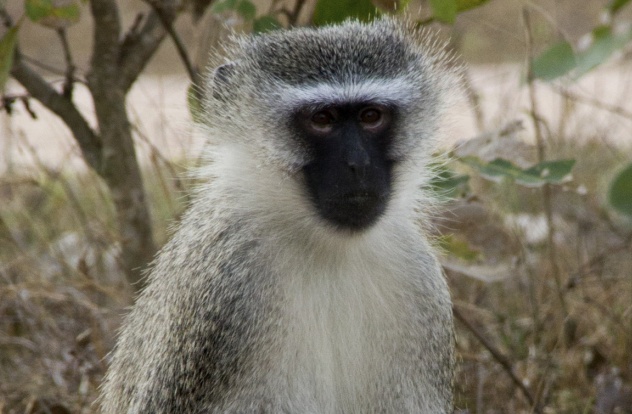
Sperm like to fuse with other cells. In a best-case scenario, that other cell is an egg, but sperm don’t always hold out for that. Sometimes, any old cell will do.
Such fusions might actually be happening a lot. After sex, when a male’s sperm are bumping around inside his partner’s body, a few may get a little confused. So, they’ll just hook up with something random and leave their DNA inside. After that, those new cells may just sit there, perhaps forever, a permanent part of the partner’s throat, liver, or whatever else. Creepy. It makes condoms sound a whole lot better, doesn’t it?
If you give sperm a little chemical nudge, they become even less picky. In one experiment, for example, scientists managed to get rabbit sperm to fuse with kidney cells from an African green monkey. Normally, monkey kidneys have nothing to fear from rabbit sperm. Monkeys and rabbits split ways a long time ago, and they don’t share many diseases. Even if a rabbit somehow ejaculated directly onto a monkey’s kidney, the monkey probably wouldn’t catch anything.
In this experiment, though, there was an extra bit of weirdness. Before the fusion, the scientists attached a monkey virus, SV40, to the rabbit sperm. During the experiment, many of the kidney cells caught the virus and became sick. As strange as it might seem, there may be a public health lesson in all of this: Never trust rabbit sperm that’s been handled by a scientist.
4 Is Mouse-Sheep Sex Safe?
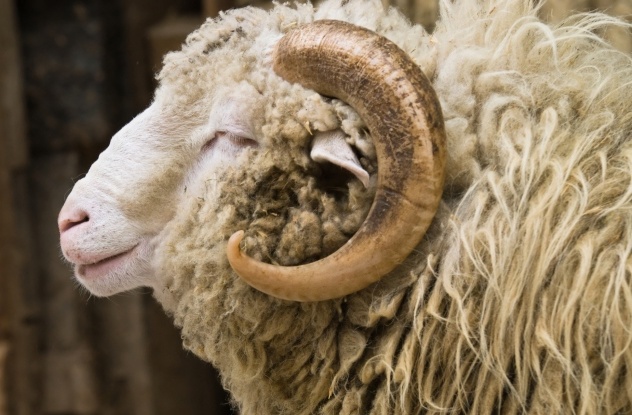
There are many factors that might prevent a mouse from having sex with a sheep. One might be a fear of scrapie. Scrapie is a nasty disease that is present in some sheep. It can cause a loss of coordination, followed by death. In many cases, scrapie is passed from mother to newborn. What’s less is clear is whether scrapie might also be passed through sex. To find out, scientists collected semen from scrapie-infected males.
You might think—naively—that the next step would have involved a female sheep, but you would be wrong. Instead, the scientists decided to use a special strain of mice. These mice had been engineered to contain a sheep protein which would make them susceptible to scrapie. Since scrapie affects the brain, the scientists injected it directly into the mice’s brains. The reasoning was that if the brain wasn’t hurt by direct exposure to the semen, it certainly wouldn’t be hurt by indirect exposure through sex.
In the end, the mice didn’t get scrapie, surely a great relief to any mouse considering sex with a sheep. A few years later, scientists did pretty much the same experiment. This time, though, they used a different strain of scrapie, and the results were different. After semen injection, some of the mice were infected. More research may be needed.
3 Frogs And Toads Are More Than Friends
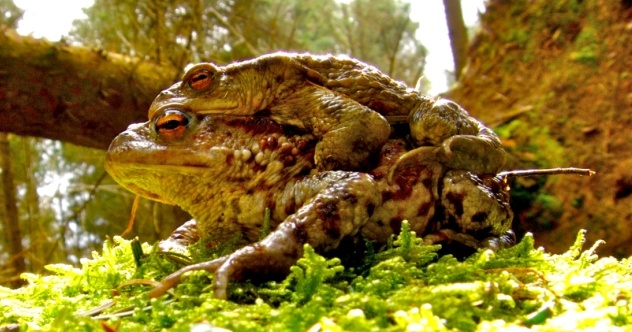
“True frogs” belong to the family Ranidae, and “true toads” belong to the family Bufonidae. That’s pretty clear, right? Of course, the animals themselves don’t always pay attention to these categories, especially when they’re feeling amorous. In several reports, frogs from the genus Rana have been observed mating with toads from the genus Bufo. Still, that’s about as far as it goes. Aside from some disputed reports, the two amphibians don’t seem to be able to make babies together. To start with, Rana sperm can’t penetrate Bufo eggs.
In the lab, however, scientists can get Rana and Bufo to be a bit more intimate, at least on a molecular level. In 1976, they got past the penetration barrier by injecting the DNA-containing sections of Rana sperm, called nuclei, into Bufo eggs. Once inside the Bufo egg, the Rana sperm nuclei went into action, doing what they would usually do inside an egg. The eggs swelled, copied their DNA, and divided. In the end, however, no mature Rana-Bufo hybrid resulted.
2 Zebrafish That Produce Goldfish Sperm
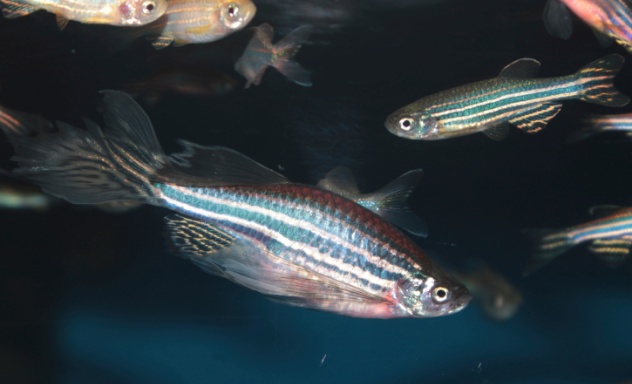
In mammals, the sex of offspring is a matter of which chromosomes are inherited. “XX” equals female, and “XY” equals male. In certain reptiles, it’s all about temperature. In zebrafish, it’s very complicated. It probably involves a bunch of genes, but the environment is important, too. No one completely understands it.
We know that primordial germ cells (PGCs) are involved. The PGCs are a special set of cells, present in the embryo, that go on to develop into eggs or sperm. In the lab, you can get rid of all the PGCs, either by killing them off or by blocking a gene that’s needed to make them. Here’s the weird part: If you eliminate the PGCs in a zebrafish embryo, it will develop into a sterile male that will produce no sperm.
Getting rid of the PGCs also has another weird effect: It turns the zebrafish into a kind of blank slate, which can be overwritten by transplanting PGCs from other fish. In the most interesting experiments, the fish that donate the cells are completely different from the zebrafish that receive them. In one experiment, scientists took these blank-slate zebrafish and introduced a single PGC from a goldfish. After these transplants, the zebrafish’s two testicles developed very differently. The testicle without the PGC was thin and unnatural-looking. The testicle with the PGC, in comparison, looked normal. Inside, however, it was teeming with goldfish sperm.
Normally, zebrafish sperm can’t do much with goldfish eggs. They can fertilize them, but the resulting embryos will never hatch. The zebrafish’s goldfish sperm didn’t have this trouble. They fathered perfect goldfish, which developed normally.
1 Female Sperm
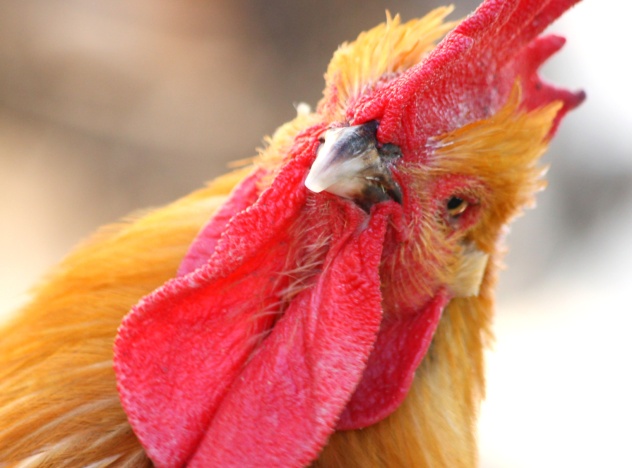
Roosters make sperm. Hens don’t. That is how it normally works, at least. In the lab, though, this convention can be upturned. With a few molecular tricks, you can make sperm that started from birds that are genetically female.
There are two ways to do it. First, you can convince a female embryo that it is male. A little chemical persuasion, aimed at interfering with the sex hormones, can do the job. When the animal grows up, it will have functional testicles that make functional sperm. In a second approach, you can take early germ cells from a female embryo and transfer them to a male. Inside the male’s testicles, these female cells will develop into sperm, not eggs.
In birds, female sperm may be an especially weird thing. This comes down to the way that sex chromosomes work. Male mammals have a Y chromosome, and females don’t. In birds, the situation is reversed. The special chromosome, the W chromosome, is specific to females. The female genotype is “WZ,” and the male genotype is “ZZ.” Under normal circumstances, WZ sperm would never happen.
Even in laboratory settings, a lot of WZ cells get stuck at a late stage of development, never becoming fully mature. A small percentage of WZ cells do become sperm, though, and those lucky few seem to work just fine. This has been verified by a few rather bizarre tests involving the eggs of other species. If injected into quail eggs, or even into mouse eggs, WZ cells trigger the start of an embryo, just like normal ZZ sperm would.
It’s been suggested that female sperm might be the start of a new world where males will no longer be needed. Here’s what we can say for sure, though: These experiments have brought female chickens the closest that they have ever come to being able to impregnate female mice, for what that’s worth.
Rachel Rodman (rachelrodman.com) writes about stuff that is alive or used to be.

